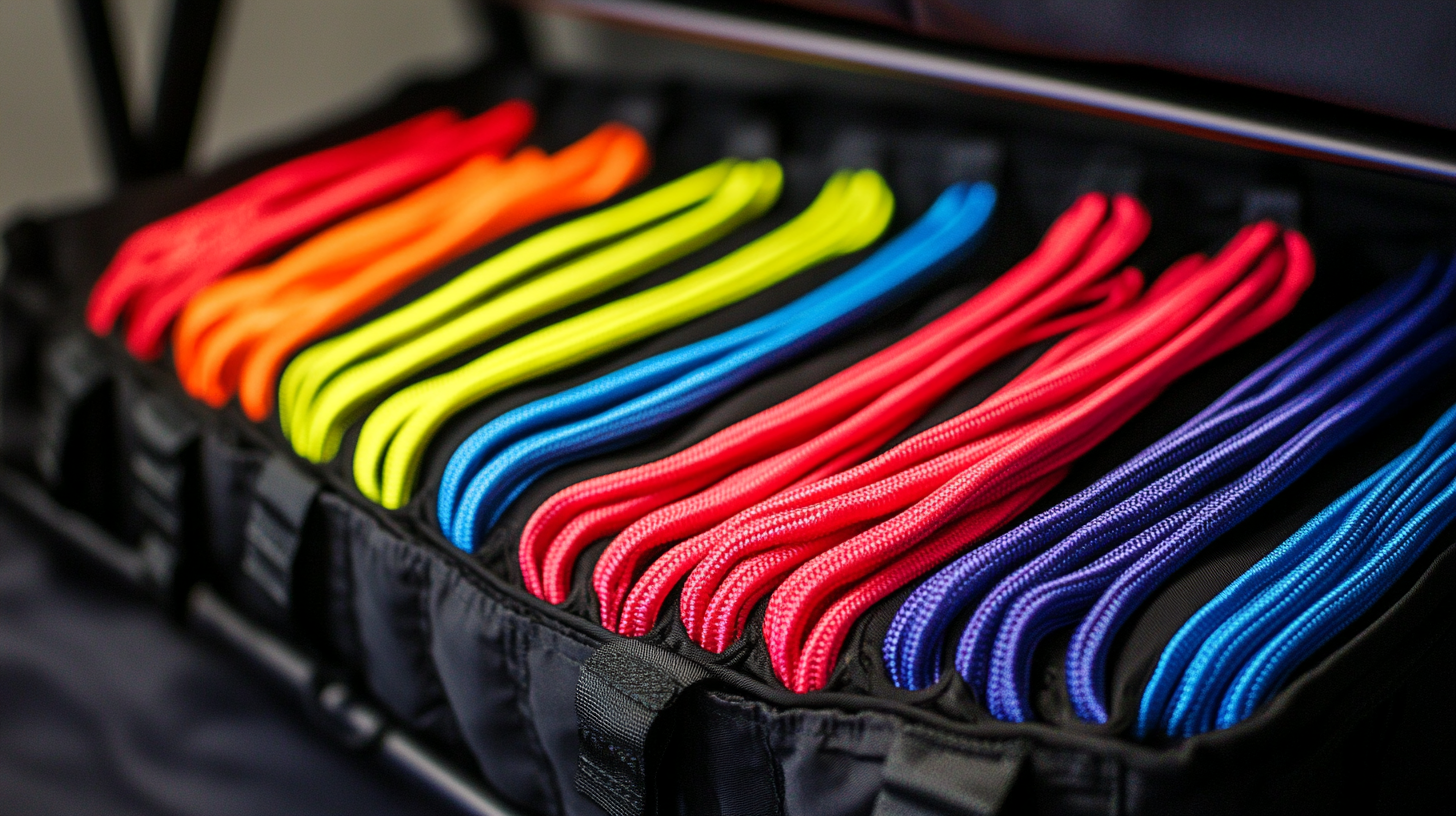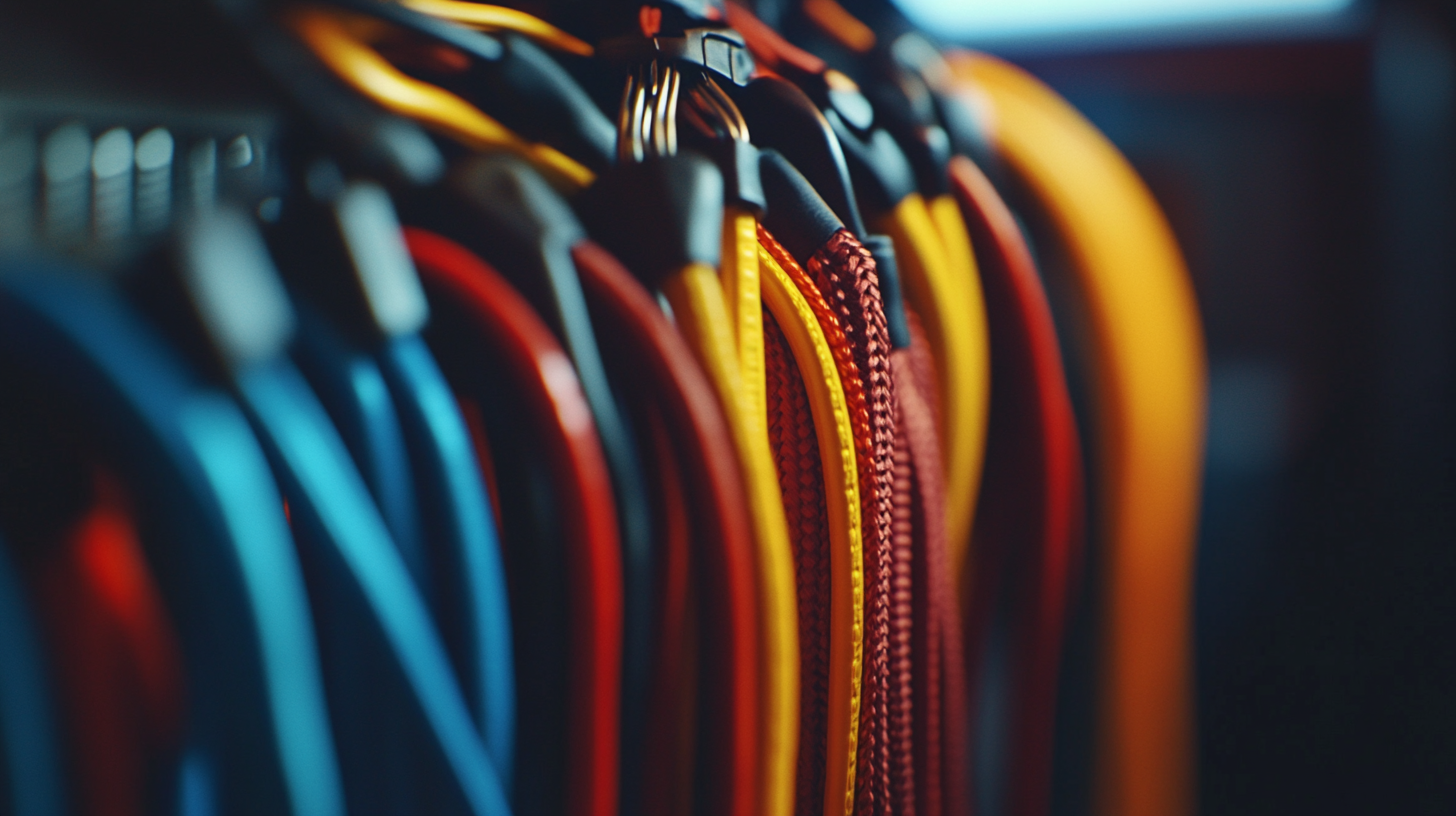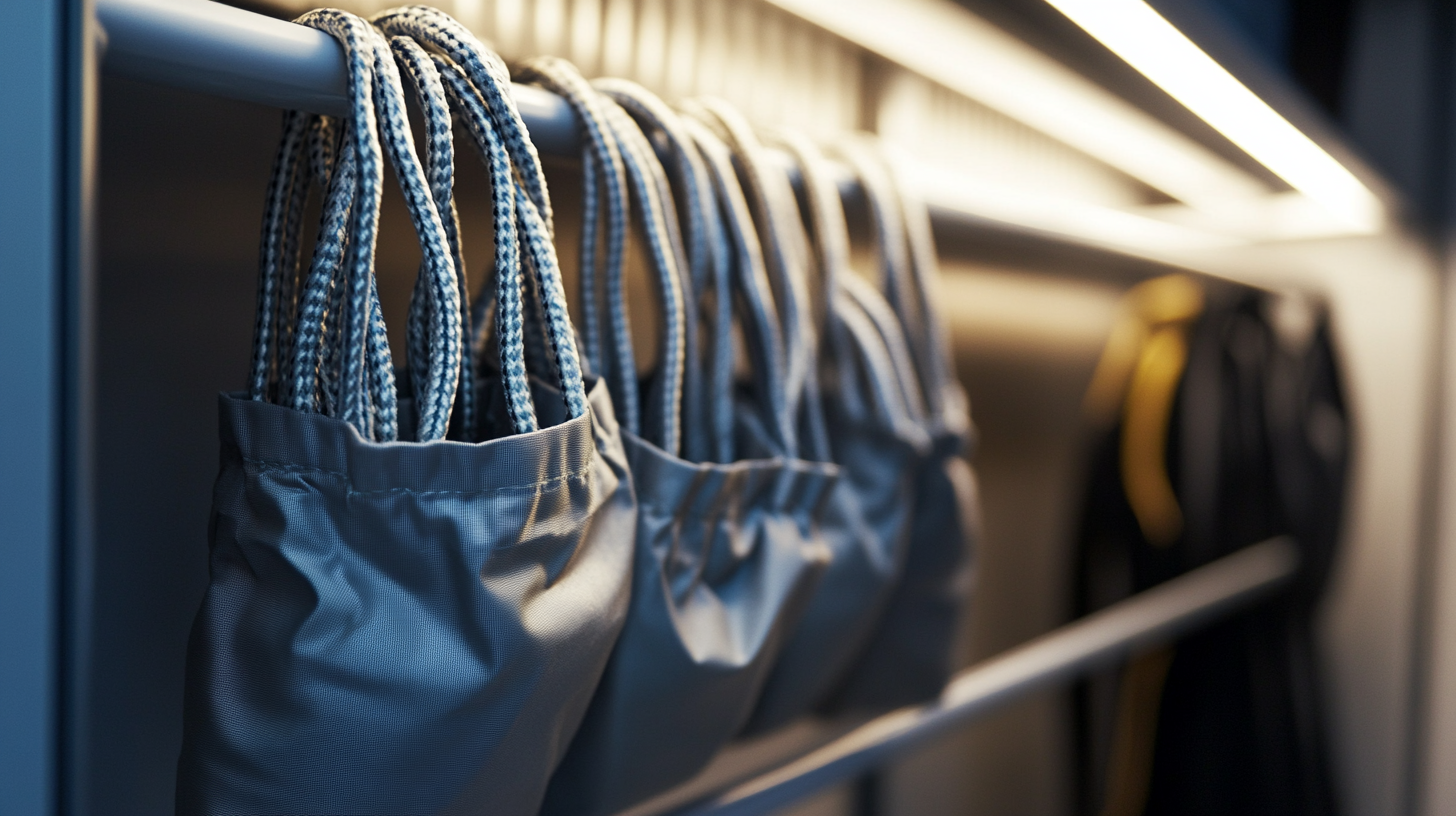- 0086-0769-87986375
- Welcome you to Dongguan Yili Bags Co., Ltd. website!
Issues with Choosing the Right Cable Storage Bag for Your Needs
Selecting the right cable storage bag can often seem like a daunting task, especially with the myriad of options available on the market today. As our reliance on various devices and the corresponding cables continues to grow, the need for effective organization solutions becomes increasingly critical. Unfortunately, many consumers find themselves facing common problems when attempting to choose the perfect cable storage bag for their needs. From misunderstandings about size and capacity to overlooking essential features like padding and compartmentalization, issues can arise that hinder the effectiveness of what should be a simple solution. In this blog, we will explore the typical challenges people face when selecting a cable storage bag, helping you to navigate these pitfalls and make an informed decision that meets your organizational needs.

Factors to Consider When Selecting a Cable Storage Bag: Size and Capacity
When selecting a cable storage bag, size and capacity are crucial factors that can significantly affect your organizational efficiency. A bag that is too small may cause cables to be crammed together, potentially leading to damage or tangled cords, while a bag that is excessively large can make it difficult to find what you need quickly. Consider the types and quantities of cables you regularly use; if you have a mix of short and long cables, look for a bag with adjustable dividers or multiple pockets to accommodate different sizes without sacrificing accessibility.
In addition to dimensions, the overall capacity of the cable storage bag should align with your specific requirements. Evaluate whether you need a bag for everyday use or for travel purposes. If you often carry your cables to various locations, a lightweight, compact design may be ideal. However, if you are storing cables at home or in one place, a larger bag with extra compartments will help keep everything organized. Prioritize a bag that offers both adequate space and efficient organization, ensuring that you can easily identify and retrieve your cables as needed.
Understanding Different Materials Used in Cable Storage Bags: Durability vs. Flexibility
When selecting a cable storage bag, understanding the materials used is crucial since it directly impacts durability and flexibility. Common materials include nylon, polyester, and EVA foam. According to a recent industry report by the Global Storage Solutions Association, bags made from high-denier nylon can last up to 30% longer than those made from standard polyester. This durability makes nylon a preferred choice for professionals who frequently transport their cables.
Flexibility is also a central concern; materials like EVA foam provide excellent cushioning while maintaining light weight. A study from the International Journal of Packaging Research indicates that flexible materials not only protect delicate cables but also allow for easier packing and unpacking, making them ideal for travel.
**Tip:** Always consider your storage environment—if you’re frequently in rugged conditions, opt for high-denier or reinforced nylon bags. **Tip:** For more casual use, a lightweight, flexible EVA foam bag might suffice, offering ease of mobility without compromising protection.
Issues with Choosing the Right Cable Storage Bag for Your Needs - Understanding Different Materials Used in Cable Storage Bags: Durability vs. Flexibility
| Material | Durability | Flexibility | Water Resistance | Weight |
|---|---|---|---|---|
| Nylon | High | Medium | Yes | Lightweight |
| Polyester | Medium | High | No | Moderate |
| Canvas | High | Low | No | Heavy |
| PVC | Very High | Medium | Yes | Moderate |
| Leather | High | Low | No | Heavy |
Technical Specifications: Assessing the Impact of Zipper Quality on Bag Performance
When selecting a cable storage bag, the technical specifications, particularly zipper quality, play a crucial role in its overall performance. High-quality zippers are designed to withstand frequent use and prevent snagging, which can lead to frustration and ultimately affect user satisfaction. According to a report from the American Society for Testing and Materials (ASTM), bags with YKK zippers—a leading zipper manufacturer—demonstrate a failure rate of less than 1% in durability tests, significantly higher than the industry average of 5-10% for standard zippers. This reliability is critical for professionals who rely on their gear for daily use.
Additionally, the zipper's material composition can influence the bag's environmental resilience. Zippers made from nylon or plastic are more resistant to corrosion and weather effects when compared to their metal counterparts. A survey conducted by the International Packaging Association revealed that over 70% of consumers prioritize durability in storage solutions, emphasizing the importance of robust zippers in enhancing the longevity of a cable storage bag. In optimizing storage solutions, paying attention to the zipper's quality not only enhances performance but also provides peace of mind for users, ensuring that their cables remain secure and accessible.

Evaluating Storage Solutions: Comparing Features Such as Compartments and Pockets
When it comes to selecting a cable storage bag, the variety of features can make the decision overwhelming. A key consideration is the number and type of compartments and pockets available. According to industry reports, 65% of consumers prioritize organizational capabilities when choosing storage solutions, reflecting the need for designated spaces for various cables and accessories. Bags with multiple compartments not only streamline access but also prevent tangling, which can save you time during critical setups.
**Tip:** Look for cable storage bags with adjustable compartments to accommodate different types of cables and connectors. This flexibility ensures your storage solution adapts as your collection grows or changes.
Additionally, aesthetic and functional features should not be overlooked. A bag with exterior pockets can enhance usability, allowing for quick access to smaller items like chargers or adapters. Research suggests that 55% of users prefer bags that combine both organization and ease of use, pointing to a trend where design meets practical application.
**Tip:** Consider bags made from durable materials that offer both protection and style, ensuring your investment lasts while matching your personal aesthetic.

Cost Analysis: Balancing Price with Quality in Cable Storage Bag Selection
When selecting a cable storage bag, the interplay between cost and quality is a crucial consideration. While it may be tempting to opt for the cheapest option available, a low price often correlates with inferior materials and design. Cheaper bags may not withstand the wear and tear of frequent travel or use, leading to premature replacement costs. Therefore, it's essential to assess the long-term value rather than just the upfront expense. Investing a bit more in a high-quality cable storage bag can save money over time by protecting your cables and prolonging their lifespan.
Another aspect to consider is the features and functionality offered at various price points. Some bags may include additional compartments, padding, or weather-resistant materials that enhance their usability. By comparing these features relative to their cost, you can identify which options provide the best balance of quality and price for your specific needs. Ultimately, understanding what you truly require in a cable storage solution can help you make a more informed purchase that caters to both your budgetary constraints and your requirements for durability and efficiency.
